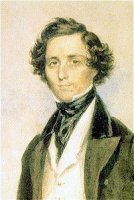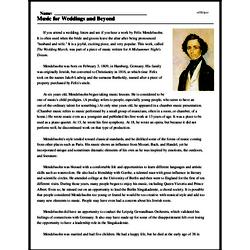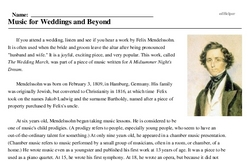Music for Weddings and Beyond
Felix Mendelssohn
Reading Comprehension for February 3
If you attend a wedding, listen and see if you hear a work by Felix Mendelssohn. It is often used when the bride and groom leave the altar after being pronounced "husband and wife." It is a joyful, exciting piece, and very popular. This work, called The Wedding March, was part of a piece of music written for A Midsummer Night's Dream.
Mendelssohn was born on February 3, 1809, in Hamburg, Germany. His family was originally Jewish, but converted to Christianity in 1816, at which time Felix took on the names Jakob Ludwig and the surname Bartholdy, named after a piece of property purchased by Felix's uncle.
At six years old, Mendelssohn began taking music lessons. He is considered to be one of music's child prodigies. (A prodigy refers to people, especially young people, who seem to have an out-of-the-ordinary talent for something.) At only nine years old, he appeared in a chamber music presentation. (Chamber music refers to music performed by a small group of musicians, often in a room, or chamber, of a home.) He wrote music even as a youngster and published his first work at 13 years of age. It was a piece to be used as a piano quartet. At 15, he wrote his first symphony. At 18, he wrote an opera, but because it did not perform well, he discontinued work on that type of production.




